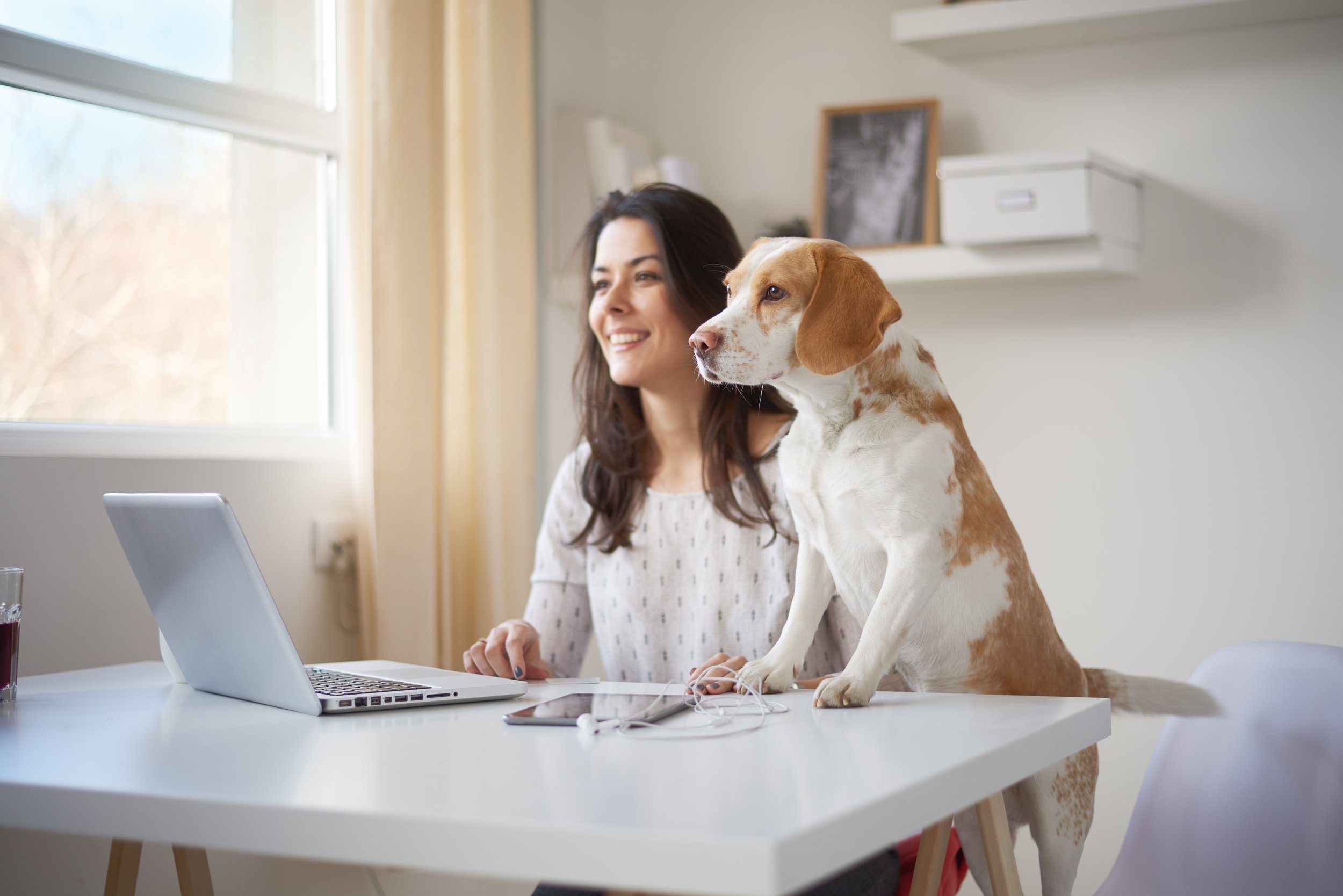Your Dog is the Perfect At-Home Coworker
If you’re one of the many people who work from home, you know how special it is to have your dog by your side while you complete your daily tasks. Although occasionally distracting, dogs are great coworkers: They offer you a source of comfort and support when you’re stressed, they encourage you to take regular breaks away from your desk, and they never have an issue with what you have for lunch. Your dog appreciates your constant companionship, too! You know they’d never pass up the opportunity to spend more time with you (and all those extra belly rubs are an excellent bonus).
But many companies are starting to encourage their employees to return to the office. This can be a difficult transition for you and your dog alike–you’ll both need to get used to new routines and a change in surroundings. If you’ve been called back to the office, it’s important that you help your dog adjust to the situation as much as possible.
Dogs Thrive on Routines
Dogs are at their best when they’re able to follow a consistent routine. Giving them set times to eat, walk, play, and sleep helps them to be at their best behavior; they gain a great deal of calmness and confidence in themselves when they’re able to regularly practice daily tasks and commands.
When you no longer work from home, you’re creating a huge change in your dog’s regular routine. Keep reading to learn five great techniques you can use to help make the transition much less stressful for your dog.
Gradually Increase the Amount of Time You Spend Out of the House
If you suddenly switch from staying at home 24/7 to being gone for more than eight hours a day, there’s a good chance your dog will struggle and even experience some form of separation anxiety. If it’s possible, take a couple of weeks before your official back-to-the-office date and gradually increase the amount of time you spend away from home and your dog.
As you go through this process, make sure you establish patterns that you’ll be carrying out before you leave and after you return from work. For example, start each morning by taking your dog for a walk and feeding them breakfast at a specific time; when you return, you can dedicate a few minutes to playing with their favorite toy or spending some time in the backyard. Whatever routine you choose, just be sure it’s as consistent as possible.
Give Your Dog as Much Exercise as Possible
Going for a long walk first thing in the morning, or before your shift begins, is a great way to tire your dog out so they’ll have the opportunity to sleep through your absence. All exercise can help boost your dog’s endorphins and increase their sense of independence. Furthermore, exercising together–whether you go on a trail run or play Frisbee in the backyard–is the perfect way to bond with your dog and let them know just how much you care about them. They’ll be at ease when you leave for the day, knowing that they’ll get to enjoy another great play session as soon as you return.
Create a Safe Space for Your Dog
By now, your dog should have at least one safe, comfortable space to call their own in your home. If you’ve been working from home for some time, one of their safe spaces is probably somewhere in your office–I know I have a dog bed ready in the corner of my own home office. When you’re away from your dog for longer periods of time, they’ll need some extra comfort and reassurance, so be sure to put a piece of clothing or a stuffed animal that smells like you somewhere they can easily access it.
Crate training can be extremely helpful in situations like these. Not only does a crate offer your dog a safe and comfortable place in which to retreat, but it can also help protect your home from any damage that could be caused by anxious and destructive behavior. Some dogs tend to chew or scratch when they’re home alone to help soothe the anxiety they’re experiencing. Crating is a great solution to this issue, but if you do decide to crate your dog while you’re away, it’s crucial that you ensure they have access to food, water, and a place or opportunity to potty.
Desensitize Your Dog to the Cues That Indicate You’re Leaving
Do you ever get the feeling that your dog can tell when you’re about to leave? Well, they can! Your dog can associate cues like putting on shoes or packing a backpack with you leaving the house. Some dogs can even determine if you’ll be away for a long time based on what your routine is before you leave.
To help combat the nervousness your dog may experience when you take these actions, go through your leaving routine without actually leaving. For instance, if you put on your shoes and grab a backpack but don’t leave the house, you’ll weaken your dog’s association of these actions with you leaving the house. When you actually do leave, they won’t be starting the day with anxiety through the roof.
Give Your Dog Puzzle Toys
Offering your dog mental stimulation is a great way to keep them distracted and wear them out. Whether you give them a Kong stuffed with treats or a puzzle filled with hidden goodies, they’ll be so focused on getting those tasty morsels that they won’t be as prone to anxiety.
A word of caution before you go this route: you should never leave your dog unsupervised with a toy they could choke on. Make sure you do a trial run with your toys before you set them out to entertain your dog; and if you know your dog to be a chewer, it may be best to avoid giving them such toys while you’re not at home. A soft snuffle mat would be a great choice as it doesn’t have small parts that could be hazardous to your pup.
Above All, Be Patient With Your Dog
Just as it will take you some time to adjust to your new routine, it will also take some time to adjust to being away from you for longer periods. Transitions are never easy, so be patient with your dog and offer them plenty of high-reward treats for good behavior. Pawsitively Pure offers delicious, healthy dog treats for dogs of every age and life stage. Browse our online store or send us a message to learn more!


